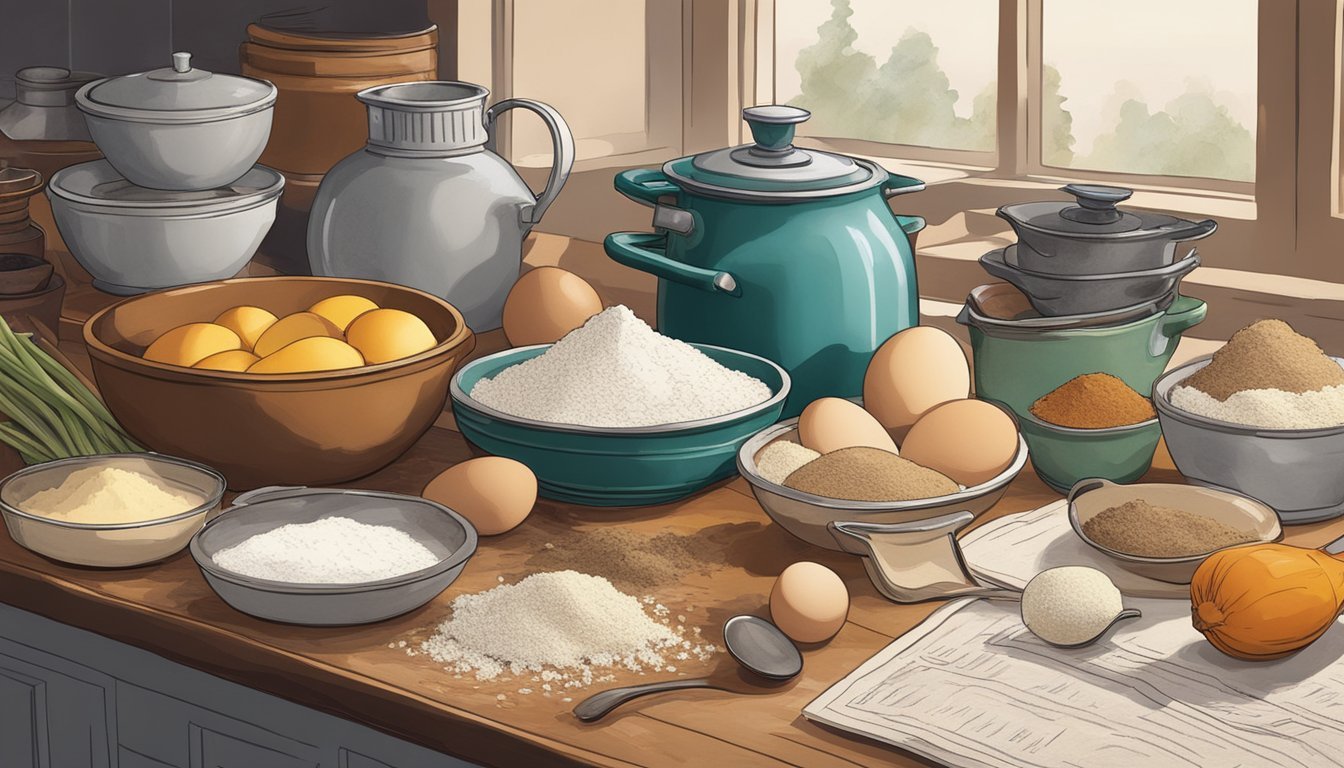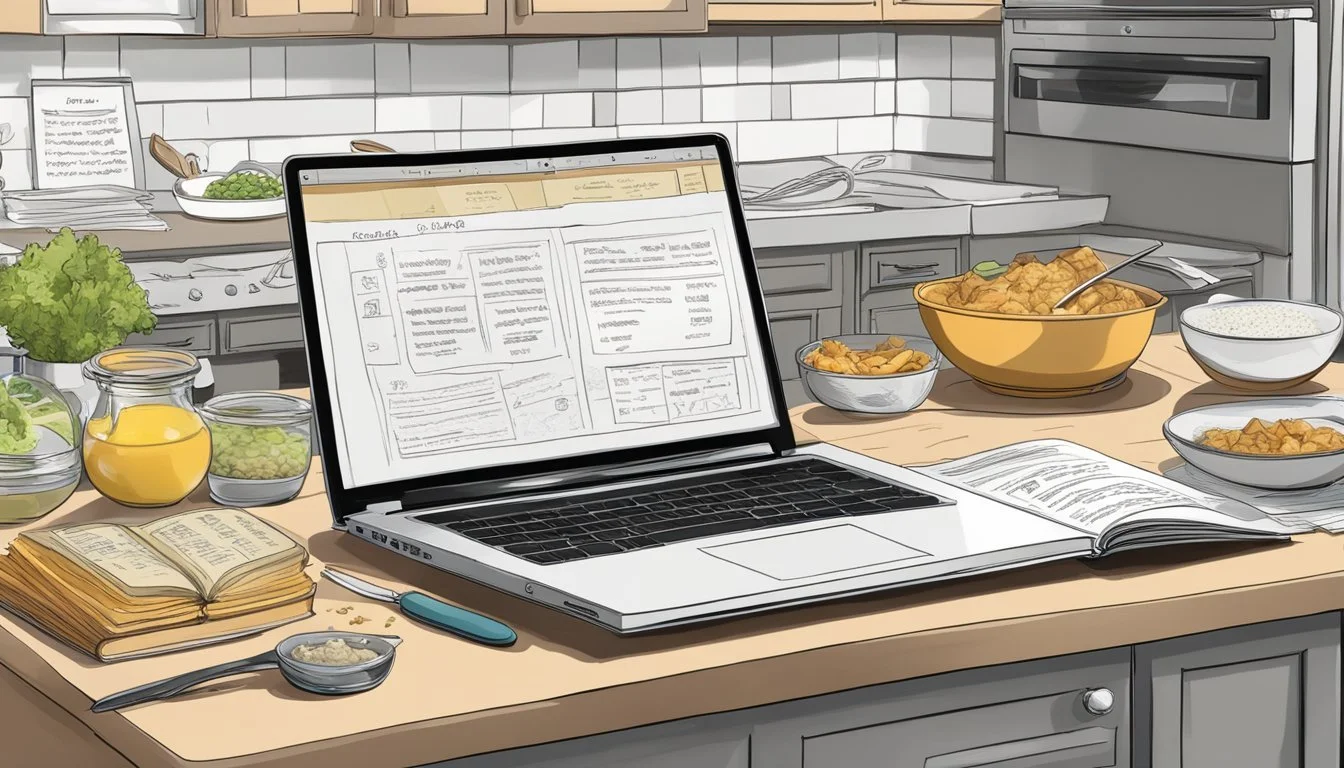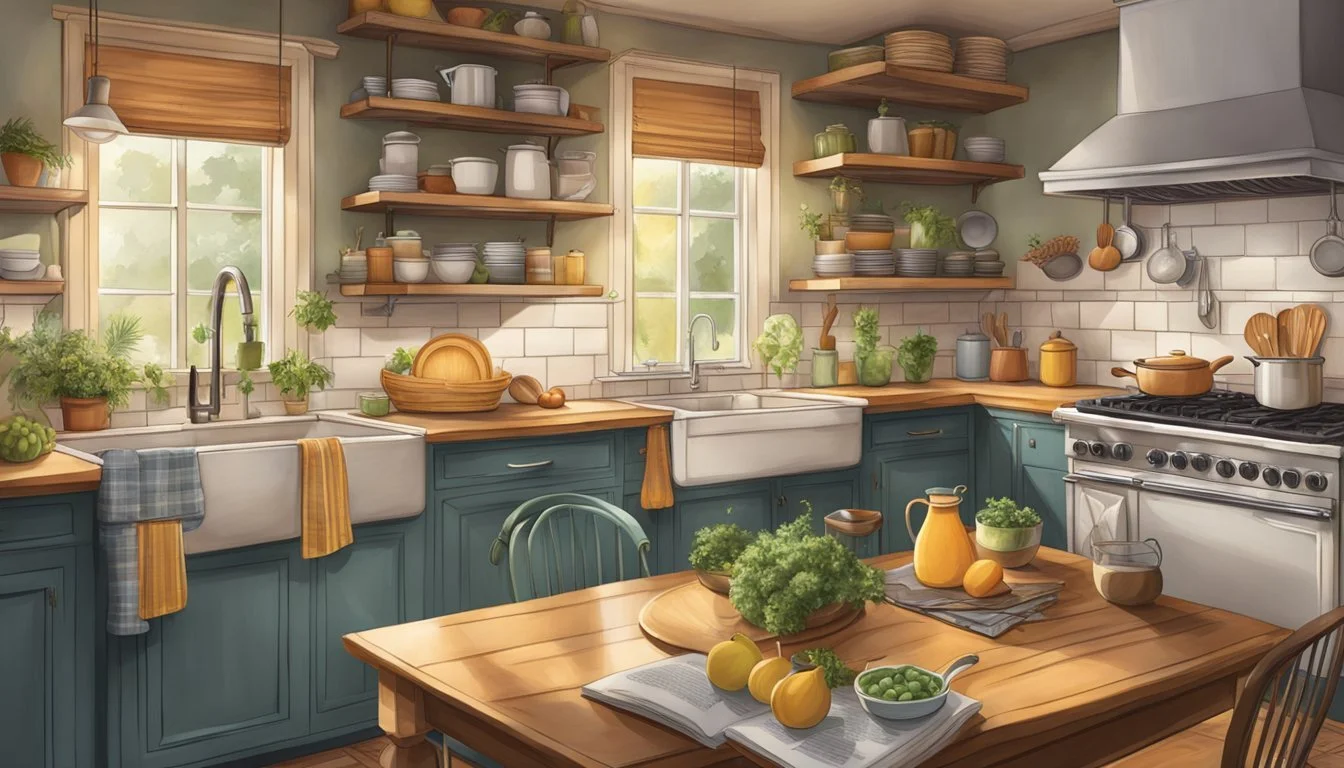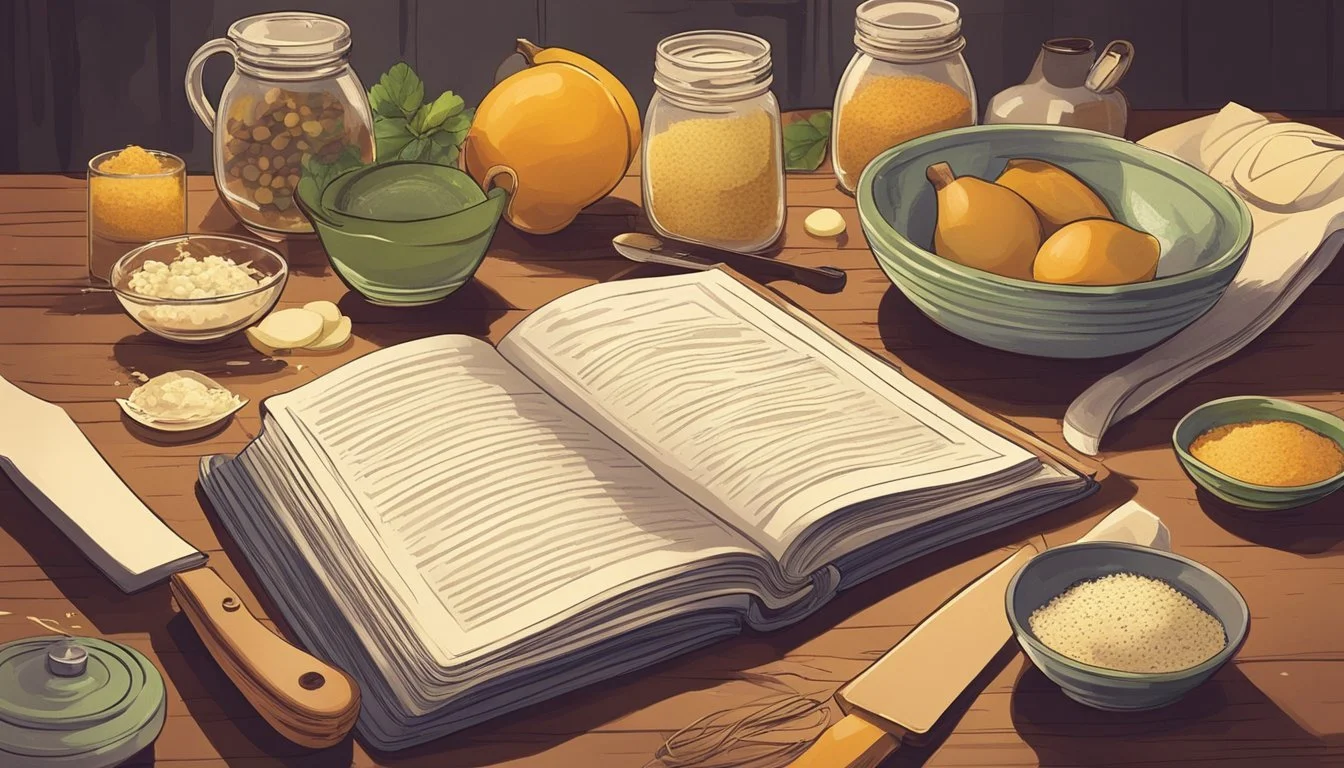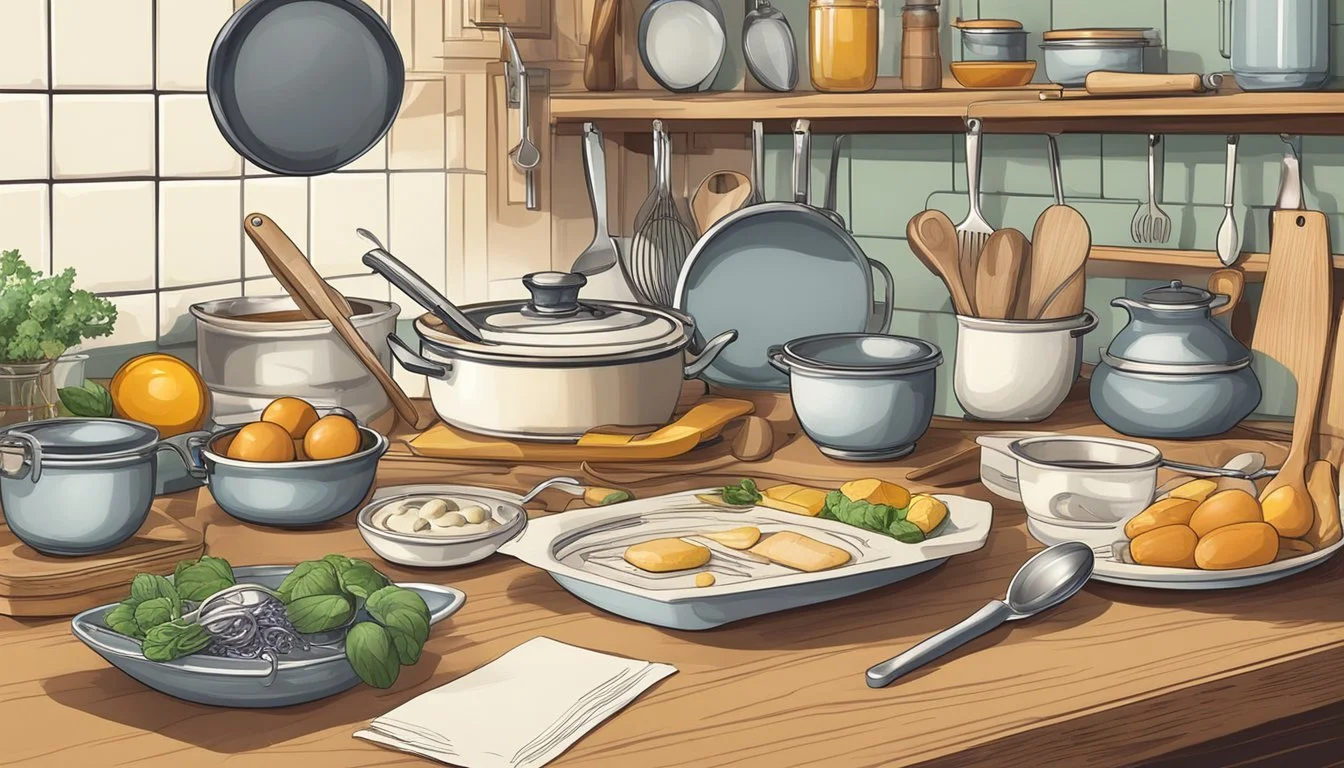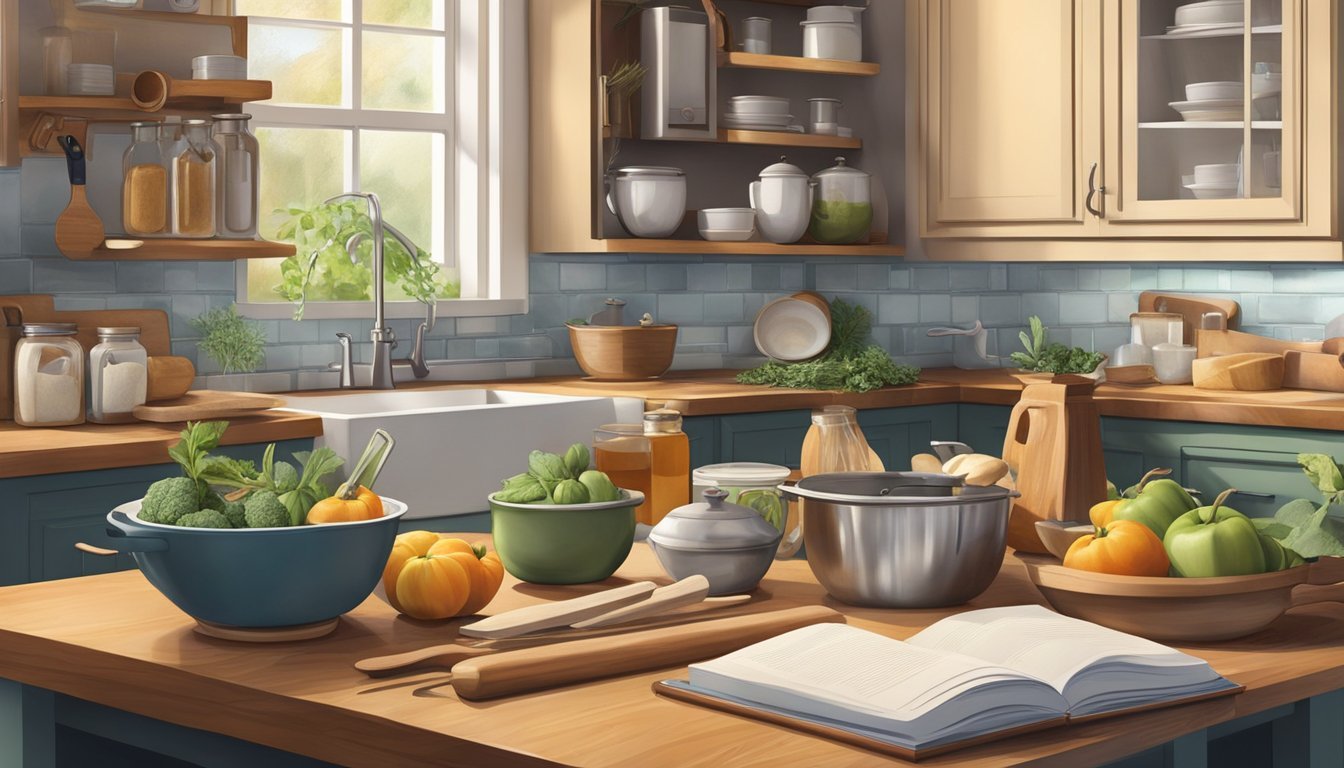How to Cook When You're Trying to Make a Family Heirloom Recipe
A Step-by-Step Guide
Cooking a family heirloom recipe is a journey through flavors that have transcended generations, connecting the present to the past. These recipes act as a bridge to one's ancestors, offering a taste of history and tradition that can be quite inspiring. They go beyond mere instructions on a page; they carry the stories, techniques, and personal touches of those who have passed them down. As such, cooking these time-honored dishes is an act of both preservation and continuation of family legacy.
Starting with the right theme can help maintain the authenticity of the family heirloom recipe. A family recipe book, focused on treasured dishes, serves as a tangible connection to family history and heritage. It's a compilation that not only holds instructions for culinary creation but also encapsulates the essence of family identity and memories.
Gathering the original recipes can be a sentimental and crucial step. If one is lucky enough to have access to handwritten notes or weathered recipe cards from an ancestor, these documents are a valuable resource. They bring authenticity to the family cookbook and serve as a direct link to the past, often complete with personal annotations that give insight into the cooking habits and preferences of family members that have cherished these recipes.
Getting Started with Family Heirloom Recipes
Creating a family heirloom recipe book is an enriching way to preserve culinary history and celebrate the stories that make a family's legacy special. The process begins with understanding the importance of these recipes, collecting them thoughtfully, and setting clear objectives for the legacy project.
Understanding the Significance of Family Recipes
Family heirloom recipes are much more than instructions for preparing food; they're a connection to past generations. These recipes often evoke nostalgia and are bound with memories that define a family's tradition. For many, they serve as a tangible link to relatives who have passed, allowing one to recreate and experience the flavors that have been cherished through the years. Cooking these recipes can be a deeply emotional journey that solidifies family bonds and carries on a legacy.
Gathering Your Heirloom Recipes and Stories
The initial step in the journey is to collect the heirloom recipes. It involves reaching out to family members and compiling the dishes that hold a special place in the family's history. Here's how one might approach this process:
Contact relatives: Speak to parents, grandparents, aunts, uncles, and cousins to source recipes.
Document stories: In addition to the recipes, ask for any anecdotes or memories associated with each dish.
Choose a format: Decide whether to present the recipes as a book, a binder, or a collection of recipe cards.
Organize materials: Explore archival storage options to preserve original hand-written recipes and notes.
By meticulously gathering the recipes and the stories behind them, one ensures that both the flavors and the narratives of the past are kept alive.
Setting Goals for Your Heirloom Cookbook
With all recipes and stories in hand, it's time to decide the scope and purpose of the heirloom cookbook. Consider the audience—whether it's for close family or a larger community—and determine how to best represent the family's culinary legacy. Outlining the structure of the book should be methodical, considering which recipes to include and how they should be categorized. This might involve grouping them by holiday, type of meal, or family member who provided them. Whether the end goal is to have a physical cookbook or a digital collection, clarity of purpose will guide the project towards success.
Planning and Organizing Your Cookbook
When one sets out to create a family heirloom cookbook, strategic planning and meticulous organization are vital. These cookbooks not only serve as a practical guide for cooking but also as a cultural treasure that encapsulates family history and traditions.
Deciding the Cookbook's Structure
The structure of the cookbook should be thoughtfully designed to ensure ease of use and to honor the lineage of family recipes. A table of contents and index are essential components that facilitate navigation. They should organize the recipes in a meaningful sequence that reflects either the frequency of use, type of meal, or cultural significance. For example:
Appetizers
Main Courses
Desserts
Family Favorites
Categories should be tailored to the family's culinary preferences and cultural background to reinforce the heirloom's personal value.
Selecting Recipes to Include
Selecting which recipes to include involves curating a collection that represents the family's unique taste and culinary heritage. Each recipe chosen for the family cookbook should have a reason for its inclusion, whether it's a frequently requested dish at family gatherings or a traditional recipe that has been passed down through generations.
Cultural Staples: Include recipes that define your family's cultural background.
Personal Favorites: Prioritize recipes that hold sentimental value or are perennial favorites.
Variety: Ensure a wide range of recipes to cater to different occasions and dietary needs.
Organizing Recipes and Content
A well-organized recipe collection is the backbone of any good cookbook. Each recipe should be clearly written with a consistent format:
Title: Bold and at the top
Ingredients: Listed in the order of use
Instructions: Step-by-step, in clear, precise language
Notes: Any additional information, such as family history or variations
The cookbook should also include pages for photographs or anecdotal side notes that add depth to the family's culinary narrative. Organize each category starting with the most significant or festive recipes to capture the essence of family traditions.
Preserving and Adapting Recipes
When attempting to recreate family heirloom recipes, one must consider both the preservation of traditional flavors and the adaptation for current cooking environments. This balance entails staying true to original tastes, adjusting for modern appliances, and documenting variations.
Maintaining Authenticity and Taste
To maintain the authenticity and taste of a family heirloom recipe, especially when dealing with handwritten or typewritten instructions, one should begin by following the original measurements and ingredients as closely as possible. It's important to respect the nuances of the recipe that have been passed down through generations. The cook might encounter measurements that are no longer standard, or instructions that assume a certain level of culinary knowledge. One practical approach is to:
Research and convert outdated measurements to modern equivalents.
Identify authentic ingredients that may not be as readily available and seek them out, or find suitable alternatives that don't compromise the dish’s integrity.
Adjusting Recipes for Modern Kitchens
Adapting recipes to fit modern kitchens often requires some thoughtful changes. Most heirloom recipes assumed the use of appliances and tools from their era, which can vary significantly from today's technology. Cooks should:
Adapt cooking times and temperatures for contemporary ovens and stoves.
Consider the use of kitchen tools like blenders or food processors, which can alter the texture in comparison to traditional methods.
Experiment with the recipe in small batches, adjusting as necessary to ensure the final product remains true to the original where it matters, while still feasible with modern equipment.
Noting Variations and Substitutions
Documenting any variations and substitutions made to an heirloom recipe is crucial. This not only helps to maintain the historical accuracy of the dish, but it also allows future generations to understand the evolution of the recipe. When making substitutions, cooks should:
List alternative ingredients and the reasons for their use, including any differences in flavor or texture.
Keep a record of any mistakes and how they were rectified, as these notes can become valuable tips for others.
Consider the impact of substitutions on the overall dish, and strive to preserve the core characteristics that classify it as an heirloom recipe.
By carefully maintaining, adjusting, and documenting family recipes, they can be preserved not just as static instructions, but as living stories that adapt and grow without losing their essence.
Adding Depth to Your Cookbook
Creating a family heirloom cookbook is more than just compiling recipes; it involves weaving in the rich tapestry of family heritage and personal touch that brings the culinary creations to life.
Incorporating Family Stories and Memories
Family stories and memories serve as the soul of a family cookbook, transforming it from a mere collection of recipes to a cherished narrative. They should encourage readers to imagine their relatives gathering ingredients, cooking, and sharing the meal. By including quotes from family members, the essence of the individual can be felt on the pages. One can even create a table pairing specific dishes with memorable anecdotes or historic family events.
Including Photos and Illustrations
Visuals play a crucial role in any cookbook, and the inclusion of family photos and DIY food photography can give a sense of authenticity and nostalgia. Photos documenting the cooking process, or final dishes, garnished with brief captions, add context and allure. Graphics and illustrations can also be utilized to depict ingredients, cooking techniques, or to embellish page borders, reinforcing the theme.
Emphasizing the Cookbook's Theme
The theme is the thread that binds the cookbook's content; it should reflect the family's culinary heritage and values. Devoting a section to recipes linked by a specific theme, such as holiday traditions or summer family reunions, helps organize the book into a more coherent collection. Highlighting the theme with consistent graphics and typography throughout, further unites the recipes and stories into a single narrative.
Design and Format Considerations
In crafting a family heirloom recipe book, one needs to carefully consider how the content is presented. This not only ensures the book is functional but also that it befits the legacy it represents.
Choosing the Right Layout and Design Tools
When embarking on the journey of compiling a family cookbook, selecting the right layout and design tools is crucial. For those inclined to digital tools, Canva and MyCanvas offer intuitive platforms where one can find various templates to start the design process. These online tools are user-friendly and cater to both novice and seasoned designers. They provide an array of typographic choices and decorative elements that can enhance the aesthetic of a cookbook, striking a balance between visuals and text.
Determining the Cookbook's Format and Size
Determining the ideal format and size of a family cookbook hinges on personal preference coupled with practicality. Whether one opts for a classic book format, a binder system, or a digital version, it is important to consider the number of pages and how the cookbook will be used. Printers specializing in cookbooks can offer guidance on common sizes and binding types that work well with the average kitchen storage. For a project orientated towards legacy, a durable and timeless format is often preferred.
Creating a Visual Hierarchy
Creating a visual hierarchy is pivotal in guiding the reader through the cookbook with ease. Key components include:
Headings: Clearly marked recipe titles or section headers in a larger, bold font
Subheadings: Ingredients, methods, and notes in distinctive, smaller fonts
Instructions for recipes should follow a consistent typewritten format to ensure clarity
Sidebars or callouts for personalized notes or historical anecdotes related to the recipes
A visual contrast between handwritten and typewritten elements can also emphasize the personal touch of heirloom recipes while retaining readability. Utilizing high-quality images and consistent styling throughout the pages will ensure the cookbook not only tells a culinary story but also serves as a piece of art in itself.
Production and Printing
The journey from a collection of cherished recipes to a printed family heirloom requires attention to detail during the production and printing phase. This section provides a practical approach to preparing your manuscript, choosing the right printer and materials, and understanding essential print specifications to ensure a quality family cookbook.
Preparing Your Manuscript for Printing
When preparing the manuscript for printing, the author should first ensure that all recipes are accurately transcribed and formatted uniformly. This involves checking for any grammatical errors and verifying measurements and instructions. Organizing the recipes into categories, such as appetizers, entrees, and desserts, can also enhance readability. Utilizing tools like style guides and templates simplifies the layout process, and incorporating a table of contents aids in navigation.
Selecting a Printer and Materials
Selecting a printer is crucial, and the author should consider printers that specialize in DIY cookbook creation or cookbook printers. They need to manage their expectations and budget while deciding on a printer who can offer quality materials that will endure frequent use. Here are the key factors to consider:
Reputation: Choose a printer known for their reliability and quality.
Materials: Opt for durable cover stock and interior paper that can withstand kitchen use.
Binding: Select a binding style that allows the cookbook to lay flat when open, such as spiral or comb binding.
Understanding Print Specifications
Understanding print specifications is key to ensuring that the cookbook meets the author's vision. They must communicate with their selected printer to understand the following specifications:
Print Resolution: Ensure clarity with at least 300 dots per inch (DPI) resolution for images.
Color Accuracy: For full-color printing, using a CMYK color model is standard.
Proofs: Request a physical or digital proof to review before the full run is printed to catch any last-minute errors or adjustments.
By carefully managing these aspects of production and printing, the author can produce a quality heirloom that preserves the tastes and traditions of their family for future generations.
Distribution and Sharing
The careful distribution and sharing of heirloom recipes preserve family traditions, allowing for future generations to appreciate and celebrate culinary heritage. Effectively sharing these recipes requires a thoughtful approach tailored to both digital and physical mediums, ensuring that all family members have access, regardless of their location or technological proficiency.
Creating a Plan to Share with Family
When one aims to share a family heirloom recipe, it is important to create a plan that considers various family dynamics and preferences. They should identify key family gatherings where these recipes can be distributed, such as reunions or holiday dinners. Additionally, one might compile the recipes into a physical book or a digital collection to present as a gift during these events, ensuring the next generation has a tangible connection to their family history.
Key Considerations for Planning:
Family Gatherings: Select appropriate occasions for sharing recipes.
Formats: Decide on digital or print formats—or a combination of both.
Using Digital Platforms and Social Media
One can take advantage of digital platforms such as email and Pinterest to distribute heirloom recipes. They may design a dedicated newsletter that periodically sends out recipes, stories, and photographs, keeping the family informed and engaged. Additionally, creating a private family group on social media platforms allows members to contribute and access recipes at their convenience.
Digital Tools:
Email Newsletters: Regular updates with recipes and stories.
Pinterest Boards: Visually organize and share recipes.
Social Media Groups: Facilitate easy recipe exchange and discussion.
Gifting and Celebrations
The act of gifting heirloom recipes during celebrations is a sentimental and meaningful way to ensure their continuity. Printed recipe cards or customized cookbooks make thoughtful presents for weddings, birthdays, and other milestone events. These physical tokens not only serve as practical tools in the kitchen but also as keepsakes that prompt storytelling and create an emotional bond among family members.
Gifting Options:
Custom Cookbooks: Personalized books that compile family recipes.
Recipe Cards: Individual recipes shared during family milestones.
Engaging and Expanding Your Audience
In the realm of family heirloom recipes, engaging with an audience means creating a bridge between tradition and community. Expansion of this audience hinges on effective use of digital platforms and direct interaction with readers and listeners.
Starting a Cooking Blog or Podcast
A self-publisher can use a cooking blog or podcast to share the nuances of treasured family recipes. This platform not only showcases culinary and cultural heritage but also draws in an audience with a penchant for genealogy and traditional dishes. They can provide step-by-step cooking tips while weaving in family stories that resonate with readers and listeners alike.
Building a Community around Your Recipes
Community is the cornerstone of success for those aiming to popularize family heirloom recipes. It is here that readers and listeners transform into active participants. Sharing their own versions or suggesting variations helps nurture a tight-knit community. Tools such as:
Comment sections on blogs
Social media groups
Live cooking sessions
can facilitate community growth and enable the audience to share their own family recipes, creating a cultural exchange.
Seeking Feedback and Encouraging Contributions
Soliciting feedback is pivotal in refining content and ensuring it resonates with the audience. By asking readers for their insights or encouraging contributions, one can foster a collaborative environment. Whether it's through surveys, comment threads, or direct emails, valuable feedback can propel a recipe from mere instructions to an engaging story that captivates the audience. Encouraging contributions of family recipes from users can also add to the richness and variety of the material, serving as a crowd-sourced genealogy cookbook.

